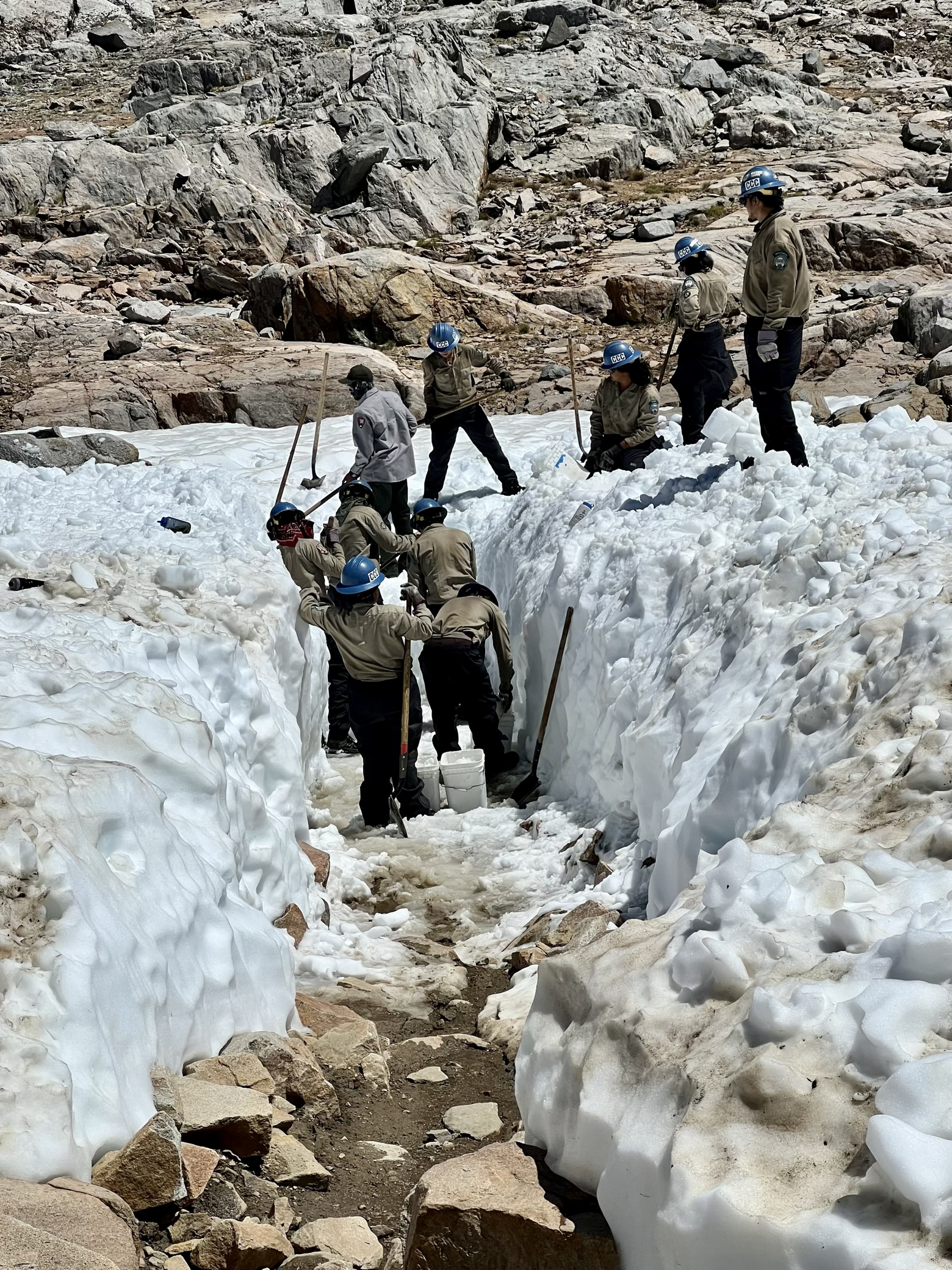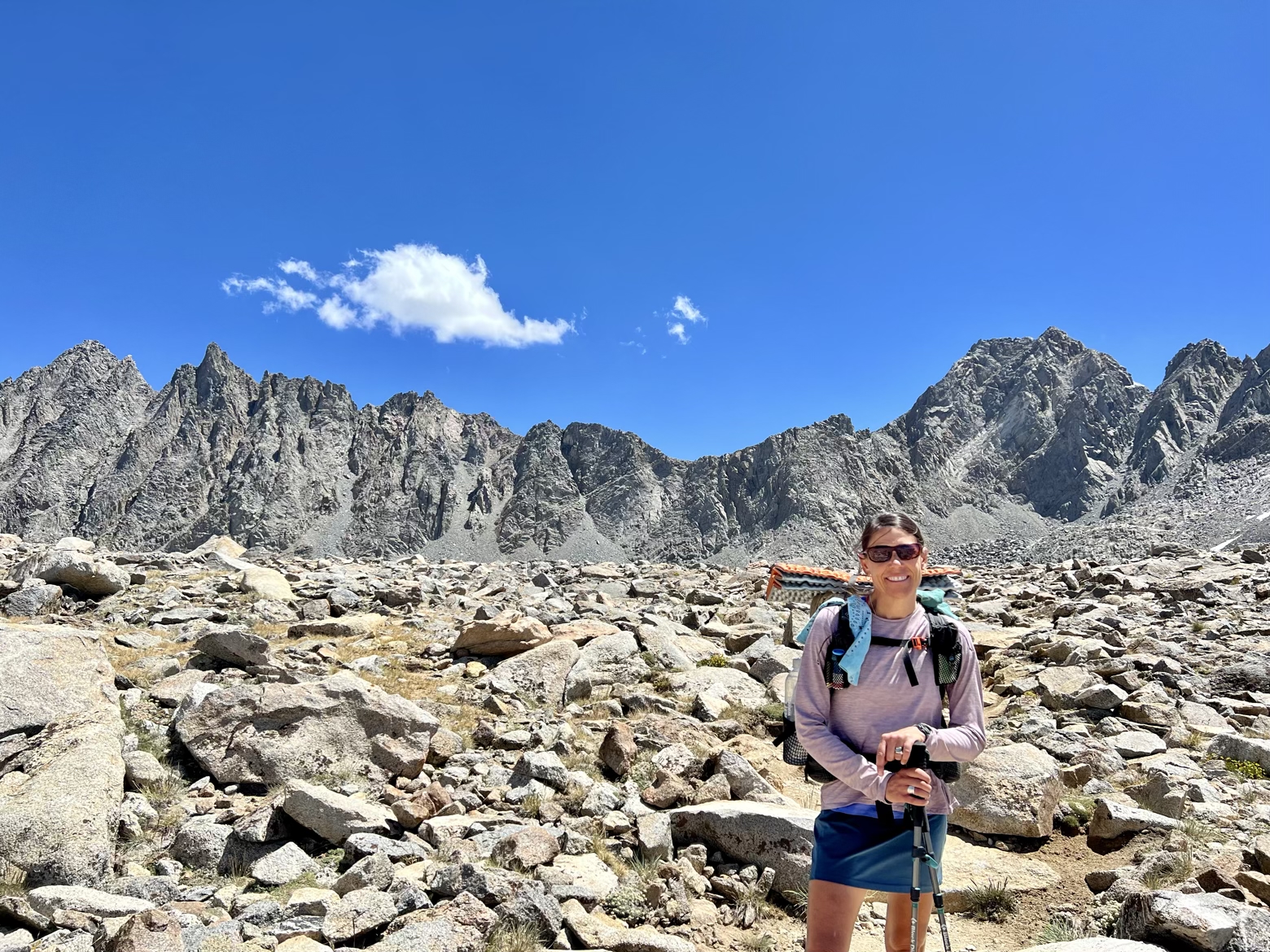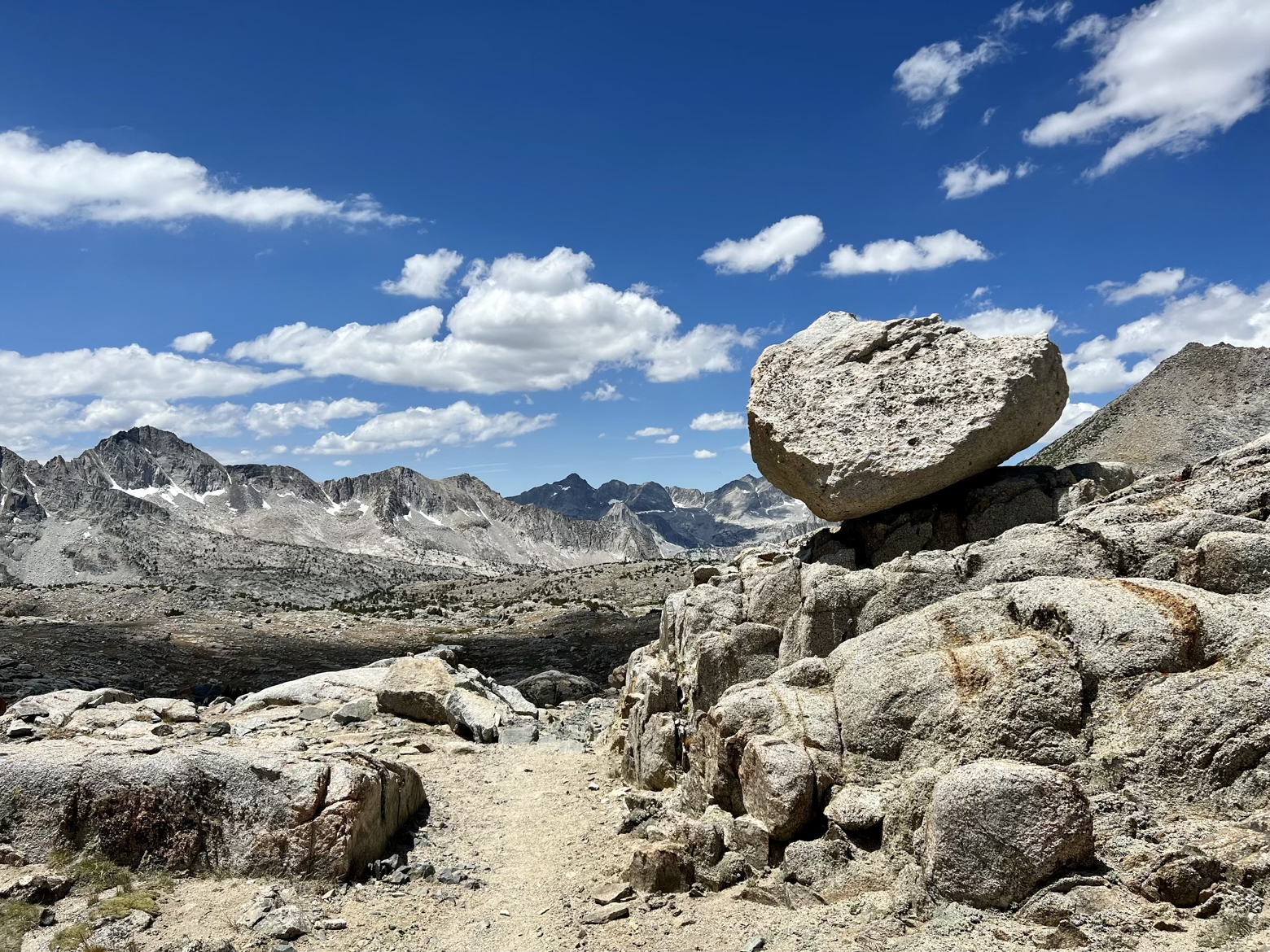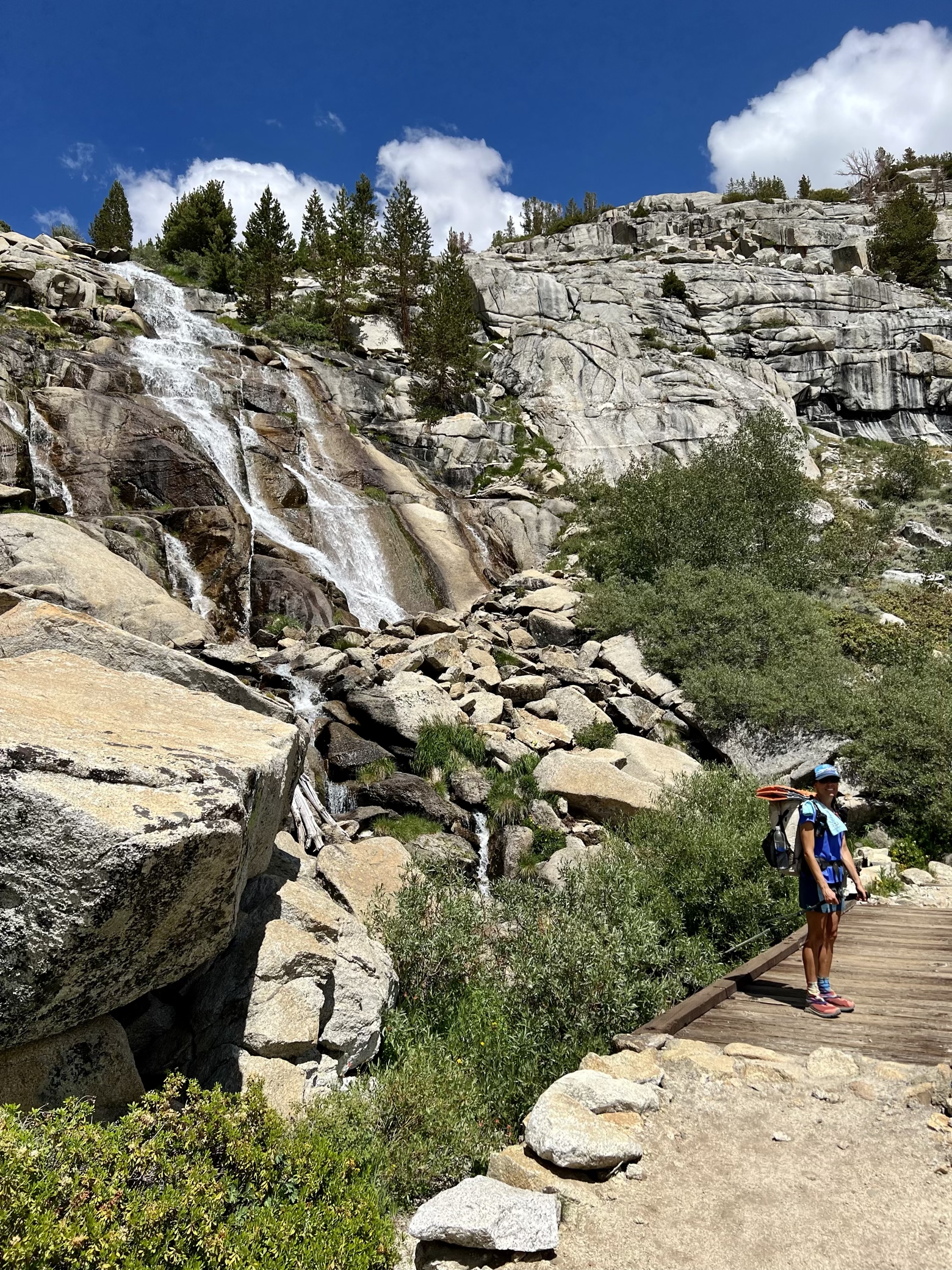Date: 7/14/22
Miles: 16.5
Total Miles: 166.4
Reality came knocking early. Saddled with 6 days of food for the final stretch to Mount Whitney, we could delay the inevitable no longer. In accordance with the first law of hiking—that what comes down, must go up—we pointed our steps back up toward Bishop Pass for the second day in a row, aiming to reverse everything we’d done the day before.
Traveling in the opposite direction, we at least had a new perspective from which to see the trail that now seemed comfortingly familiar. Slowly gaining back the 3,000 feet we’d given away yesterday afternoon, we hadn’t gotten far before things came to an abrupt halt.


A man with nothing but a fishing pole and a Nalgene bottle came walking toward us, clearly in distress. Confused, disoriented, and complaining of being lightheaded, it was time to put those Wilderness First Responder skills to good use.
Fast forward an hour, and we’d treated him for dehydration and escorted him back down the trail to lower elevation out of concern for possible altitude illness. That morning detour behind us, we were back on our way up to Bishop Pass where we found the Civilian Conservation Corps crew exactly where they’d been a day earlier: at nearly 12,000 feet, digging a trench to clear snow from the trail.

At the pass, our journey back to the JMT was half complete. The only change to the otherwise unblemished azure sky was the addition of tiny clouds, seemingly poised to inject even slightly more drama to a landscape that hardly was lacking for it.


All that remained was to give back every foot of elevation we’d gained in a knee jarring 3,000-foot descent. The idea of going downhill after so much effort to climb uphill might sound like sweet relief, and for awhile, it is. But the relentless pounding, as your body becomes one giant shock absorber, resisting gravity with each step, insidiously begins to take its toll. The monumental climbs of any trail might be punishment for your lungs and legs, but it’s the descending that often leaves the most indelible imprint on your body by day’s end.

Fortunately, a second trip through the splendor of Dusy Basin was a pleasant distraction from the slowly accumulating pain in our joints and feet. Clouds that had multiplied rapidly cast a patchwork of shadows across the basin, one chasing another, merging and separating. It was a complex interplay of light and shadow, concealing and revealing the details of the Basin.

At the edge of Dusy Basin, we could at last set eyes on the canyon through which the JMT ran. Far below, somewhere amid the dark green comfier canopy, was the intersection we’d left behind almost 24 hours ago, and to which we’d soon return.


Thinking of how many hikers we’d seen on the trail since we began, one of whom was returning to this part of the Sierra for the first time in 50 years, I wondered at how much history these mountains have seen. How many footsteps have traveled across their green meadows and granite shoulders?
As one of the more famous trails in the United States, if not the world, it’s tempting to imagine that history of travel through the Sierra as being confined merely to the time since the JMT itself was born. But to believe that is to believe only a very small, and substantively sanitized version of history. A nostalgia born of omission.

The truth is that visionaries like Muir, Theodore Solomons, and Joseph LeConte, along with the raw physical effort of countless others, might be the reason the JMT exists in the form we experience it today. But for hundreds of years beforehand, tribes indigenous to the Sierra Nevada had used the route of the JMT, along with a complex system of other trails, as part of a vast trade network. The Paiute name for this route? Nüümü Poyo. The People’s Trail.
Walking any trail is an exercise in connecting with history—both with the travelers of the past, and those of the future. Returning, at last, to the JMT today, was an opportunity to see that trail ancestry in its entirety, extending far beyond the names we know to the ones that perhaps we should.

Latitude/Longitude: 37.05281,-118.57936
